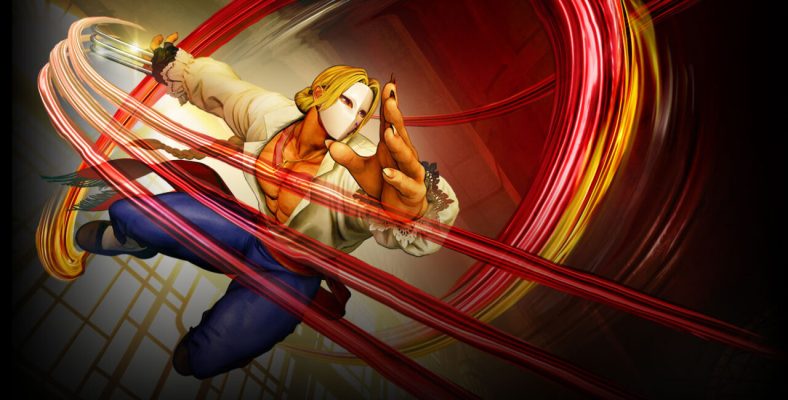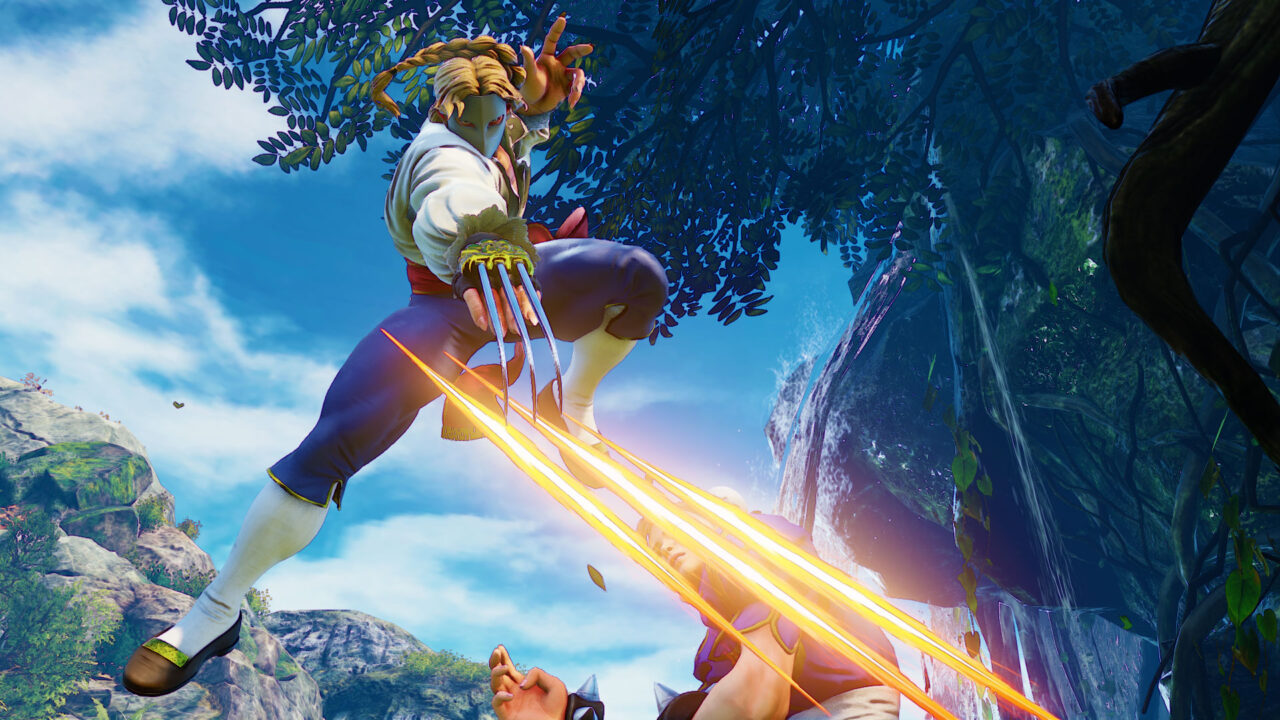HISPANICS IN GAMES – Breaking the macho mold with Street Fighter’s Vega

Welcome to the third entry in this, our beloved series dedicated to highlighting Hispanic representation in gaming. After the last piece, which featured the work of pioneer developer John Romero (DOOM, Quake, Wolfenstein 3D), I decided to go a little bit left-field and go with a game character (Street Fighter’s Vega), rather than a real person.
I think this is important for a number of reasons.
First, it’s a much more direct means of representation, as game characters become part of players’ experience with a franchise for decades. This shared history creates a very strong bond between player and character, sometimes to the point of blending the two in many ways (cosplay, esports, etc).
Secondly, this particular character is one with whom I have a very personal connection, and I think it’s important for us to celebrate these moments in gaming. Greek philosopher Aristotle said: “art imitates life”, and this week we celebrate one of the earliest instances I can remember of a worldwide gaming phenomenon addressing complex identity archetypes.
This week, we celebrate Street Fighter‘s Vega, the effeminate, complex, self-loving Spanish Ninja.
Getting the boring disclaimer out of the way
Yes, I know Vega is a villain for most of the franchise’s history. I’m well aware that the Narushisuto archetype on which he is based has an inherent negative connotation. It also hasn’t escaped me that Vega relishes in masochism, mutilation and disdain for others. While at first glance this may rule him out for many as a role model, for me, it makes him imperfect. It makes him human. It makes him relatable.
Within the context of the series, where everything is cartoonishly exaggerated, where things are quite far from a documentarian’s portrayal of humanity, Vega’s complex mix of a tragic childhood, effeminate demeanor and violence towards others make him a much more interesting character than a lot of his co-stars in the Street Fighter franchise.
I am not celebrating his negative sides. I’m embracing the positives. So, having addressed the elephant in the room, let’s talk about what makes Vega a surprisingly layered character, and why I (and many others like me) have connected with him over the past three decades.
Breaking the macho mold
If you are not from Latin America, I think it’d be difficult to comprehend just how much toxic masculinity is not only tolerated, but celebrated, around the continent to this day. The mega-macho, gay-bashing, soccer-playing, woman-beating “personality” has survived well into the XXI Century, and in a societal setting, it’s very difficult to stray away and display traits that do not conform to it.
I am currently living in Paraguay again. This is where I was born, and where I lived until my late teens, when I moved to Canada. After spending 12 years there, I’m back in South America, doing business, having married my long-term, long-distance girlfriend, and generally looking after my family.
Paraguay was a military dictatorship until 1989. Hard-line Catholicism is still present, and “pro-family” (a polite way of describing gay-bashing) goes all the way to the top: President Mario Abdo Benítez (himself the son of a dictator-era politician) recently reiterated that “gender ideology” will not be tolerated here. They are even removing descriptions of homosexuality from schoolbooks. And this is in 2020.
In 1995, when I was 10 years old, things were even worse. And I must admit, I was not making it easier for myself: I was scrawny, soft-spoken, came from a nice family, hated soccer, didn’t find a single thing wrong with being gay, and was growing increasingly disenchanted with the Church.

Most video game characters didn’t speak to me. In fact, characters as such were a relatively new concept, and therefore, character development was almost non-existent. RPGs were not making their way down here, so my choices for representation in gaming came from Contra, Sonic, Mario and Mortal Kombat. Selection was limited, and despite thoroughly enjoying the hobby, I didn’t feel like I was seeing myself on screen.
Then, during a summer vacation, I had the chance to play Street Fighter II at an arcade parlor in Argentina (where my mom’s family comes from). Amidst all the Japanese and American sounding games and characters… there stood Vega. A Spanish last name. Slender figure, masked, long hair. Claws. I remembered Wolverine from the X-Men, one of my favorite characters at the time. It took all of 2 seconds to choose Vega as my character. It’s been over two decades, and the more I get to know him, the more I admire just how brave it was for him to even exist all those years ago.
Street Fighter’s Vega – Who he is and why he matters
I know everyone hates reading articles that look like Wikipedia stubs, and this information is widely available, so I won’t bore you with details too much. But I feel like getting a proper grasp on who Vega is will provide a bit of context as to why his existence was so revolutionary, for me and many others, too. And it has to do with much more than his name.
Vega was born into Spanish royalty, and his beautiful mom was killed by his violent stepdad. Right off the bat, this hit home quite hard. Only last week, a police officer killed his children and his in-laws while on a video call with his wife. Not three days later, another man killed most of his family, too. Both had documented history of domestic abuse. Both never even set foot in a police station. It just goes unnoticed, unattended, uncared for. And this has always been the case in Paraguay. It was perhaps even more prevalent during the dictatorship and immediately after, when dissidents would just disappear, men rule the streets with iron fists, and a “noble” family gave you carte blanche to anihilate anyone. It has since been infered that Vega’s violent behavior is a manifestation of PTSD, derived from the tragedy of losing his mother at an early age.
Another thing that clicked with me about Vega’s character was his effeminacy. As I mentioned before, I’ve always struggled (thankfully) to fit into the strict, religious binary definition of what being a man is supposed to be. This, despite holding a black belt in Kung Fu and having served in the Army. I used to believe that this was wrong. Why didn’t I like soccer? Why did I prefer to listen to music, or watch anime? The Latin American male archetype is so embedded in our culture, that I was afraid to show my support of the LGBTQIA+ community growing up, because I knew it would cause friction within my family. It still does, but I stand my ground. And so did Vega: though most characters in Street Fighter, particularly early entries in the series, are stereotypical (Soldier, Martial Artist, Big Bad Guy, etc), Vega went against the grain. Here was a man who openly appreciated beauty, finesse, who had mannerisms… well, he was definitely not what you’d consider traditionally manly. And neither was I. I’m still not. And I’m OK with it now. But back then, it was a revelation to me that this was not only something to be tolerated, but rather treated as a positive aspect of one’s strong personality. It allowed me to embrace my own effeminacy.

His impact and my gratitude
All these years later, I still look back fondly and remember discovering my own personality through video game and movie characters. Vega will forever have my love and gratitude for allowing me to embrace a side of me that, due to societal pressure, I had been ashamed of before then. And I don’t think I’m alone: most recently, fans of the series went bananas when Capcom announced Vega would finally be introduced as part of the Street Fighter V roster.
He’s never been a very competitive eSports character, but casual players still rock their Vega representation any chance they get. Vega cosplayers can be seen sporadically at cons and, though perhaps other characters far outnumber Vega’s popularity, I put forth the idea that Vega cosplays are for people in the know. For Street Fighter connaisseurs. Kind of like most people know about Charizard, but true Pokémon fans know that Dragonite is where the party’s at.
Despite his many flaws, or perhaps partly thanks to them, Vega will always remain as one of gaming’s pioneering characters when it comes to representation. Capcom were able to break the mold of what it meant to be a HIspanic man in the 90s. And for a silly game about punching and kicking each other senseless, that is not a shabby legacy to have. Not shabby at all.
Just omit the mutilating and dismemberments.
Categorized:Editorials

